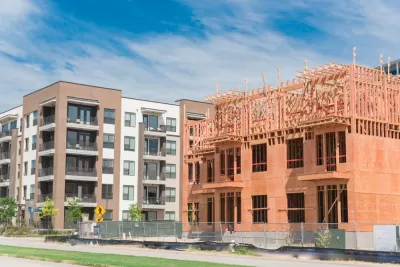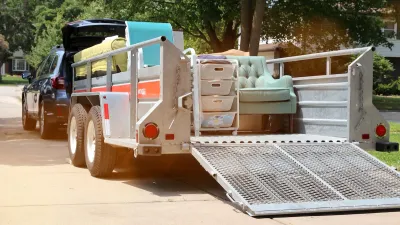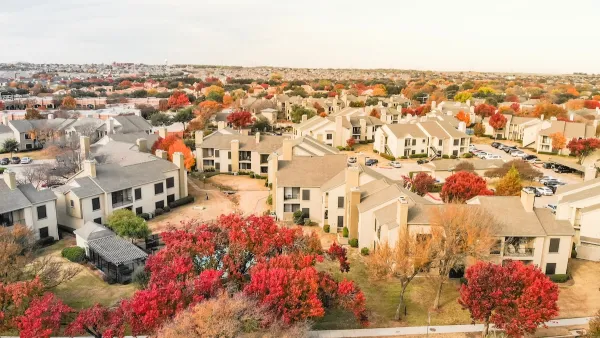Some of the fastest-growing metro areas in the country are also the ones building the most new housing.

What do the fastest-growing parts of the country have in common? According to a piece by Justin Fox in Bloomberg CityLab, it’s not lower taxes, better weather, or lower crime rates. It’s the availability of housing.
According to Fox, the South and inland West, home to 46.3 percent of the U.S. population, accounted for 65.8 percent of new housing construction between 2020 and 2022. Admittedly, “Many of these metro areas are able to build so much more housing in part because they’re surrounded by mostly flat land on which developers can easily plunk down new subdivisions.” Other, more geographically challenging, cities, like Seattle, have taken conscious actions to promote multifamily development. “Apartments also made up the majority of new housing permitted in and around Austin, Salt Lake City and Denver, and more than 40% in metro Orlando, San Antonio and Richmond.”
Meanwhile, while the nation’s biggest cities and walkable urban areas remain desirable—and, despite early pandemic predictions, nowhere near ‘dead’—they are also less and less affordable for most U.S. households.
See the source article for charts detailing the most and least affordable cities in the country, as well as rates of housing construction.
FULL STORY: What Do US Growth Zones Have in Common? They Build Housing

Planetizen Federal Action Tracker
A weekly monitor of how Trump’s orders and actions are impacting planners and planning in America.

Congressman Proposes Bill to Rename DC Metro “Trump Train”
The Make Autorail Great Again Act would withhold federal funding to the system until the Washington Metropolitan Area Transit Authority (WMATA), rebrands as the Washington Metropolitan Authority for Greater Access (WMAGA).

The Simple Legislative Tool Transforming Vacant Downtowns
In California, Michigan and Georgia, an easy win is bringing dollars — and delight — back to city centers.

The States Losing Rural Delivery Rooms at an Alarming Pace
In some states, as few as 9% of rural hospitals still deliver babies. As a result, rising pre-term births, no adequate pre-term care and "harrowing" close calls are a growing reality.

The Small South Asian Republic Going all in on EVs
Thanks to one simple policy change less than five years ago, 65% of new cars in this Himalayan country are now electric.

DC Backpedals on Bike Lane Protection, Swaps Barriers for Paint
Citing aesthetic concerns, the city is removing the concrete barriers and flexposts that once separated Arizona Avenue cyclists from motor vehicles.
Urban Design for Planners 1: Software Tools
This six-course series explores essential urban design concepts using open source software and equips planners with the tools they need to participate fully in the urban design process.
Planning for Universal Design
Learn the tools for implementing Universal Design in planning regulations.
Smith Gee Studio
City of Charlotte
City of Camden Redevelopment Agency
City of Astoria
Transportation Research & Education Center (TREC) at Portland State University
US High Speed Rail Association
City of Camden Redevelopment Agency
Municipality of Princeton (NJ)





























